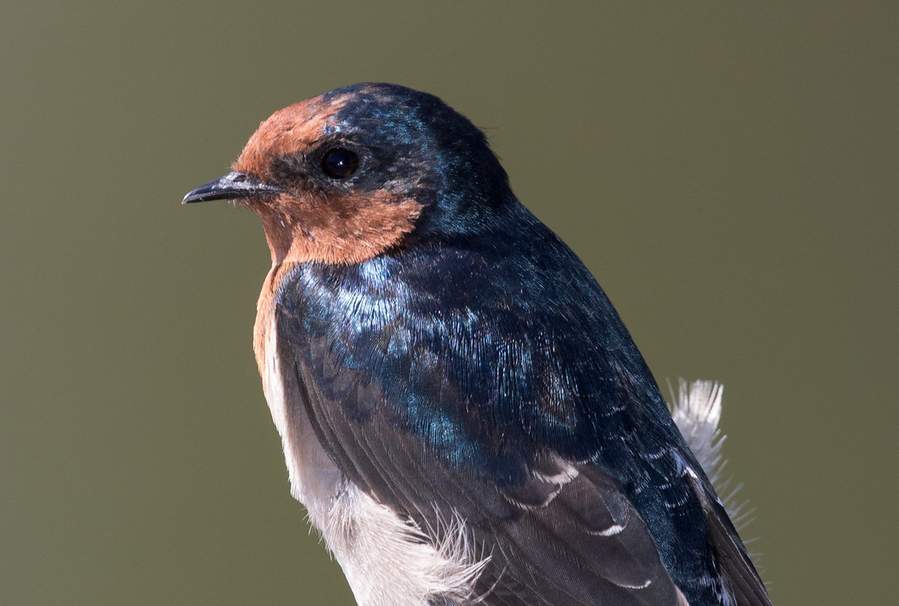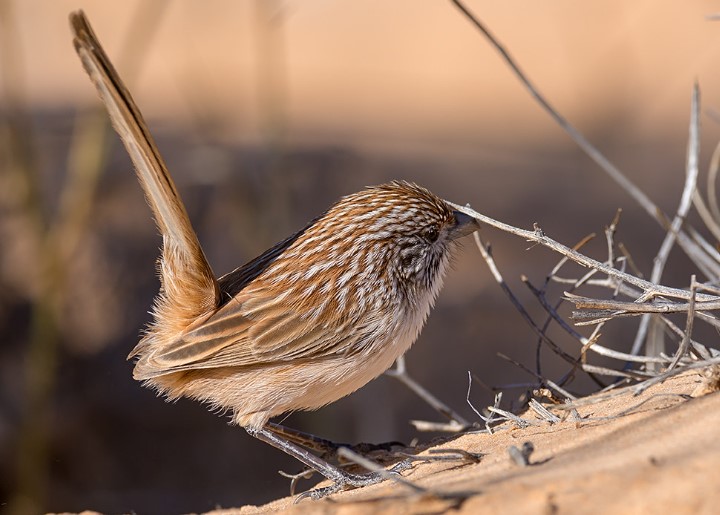Habitat: The Welcome Swallow (Hirundo neoxena) is Australia’s representative of the holarctic Barn Swallow and the similar but larger-billed and square-tailed Pacific Swallow of Indonesia and Melanesia. It constructs similar cup-shaped mud nests under eaves, in open sheds, beneath culverts and bridges, and inside mine shafts and hollow trees. Therefore, it sings in the same twittering tone, has the same russet forehead and throat, and has the same plain back.
Nevertheless, after breeding, the flock roosts gregariously in groups of up to 100 or more at night. The Welcome Swallow is partially migratory. It breeds in the spring and summer over the better-watered parts of southern Australia, north to roughly Shark Bay in the west and Cairns in the east, avoiding the deserts.

Moreover, it has spread due to man-made clearings and structures, with the clearings providing foraging space and the buildings and other structures providing nesting places. Many, but not all, swallows go north after breeding. While there is no visible movement in the west, most Tasmanian birds migrate to the mainland; those on the southeastern mainland go to central Australia; and those nesting farther north may spend the winter in Torres Strait.
When spring arrives, many birds return to the same nest or a nearby site, frequently with the same mate. Both sexes construct, settling around earth ponds to collect mud. They walk clumsily, shuffling around with the assistance of their wings.
Identification: Both sexes are similar. The upper parts are metallic blue-black; flight feathers are duskier. Forehead and throat russet, separated by black lores. The rest of the underparts are whitish fawn, edged white on undertail coverts. Underwing coverts are dusky. The deeply forked tail is dusky, with the white subterminal bar on the underside, broader and more complete in males than females. The eyes are dark brown. The bill is black. The feet are dark flesh-grey. The immature bird lacks body sheen; the tail is more square-cut with vestigial outer streamers; and the russet is paler.
Vocalization: As far as vocalizations, the Welcome Swallow is normally quiet and its call does not carry very far. The call is low but sharp chep in contact, usually in flight; high-pitched, whistled sweet in alarm, often repeated. However, his song is warbling and twittering notes strung together and usually sung from a perch for up to 15 or more seconds.
Nest & Breed: The nesting and breeding occur in August-December; often two or more broods per season. Nest a cup of pellets of mud and vegetation, usually plastered to the vertical surface of the culvert, wall of a building, side of a bridge, mine shaft, tree hollow, or cave wall; thickly lined with grass, animal hair, and feathers.
Eggs: Welcome Swallow lays 4 to 6 eggs, usually four or five; white, freckled, and spotted red-brown, usually at the larger end; oval shape, about 19 x 13 mm. Male welcome swallows do not participate in the incubation of the eggs. The female alone incubates the eggs, which hatch after two to three weeks. The young are fed by both parents and leave the nest after a further two to three weeks.

Distribution: Welcome Swallow can be found throughout open areas of eastern and southern Australia, including Tasmania; vagrants in northwestern Australia. Nomadic and partially migratory after breeding, reaching Torres Strait, northwestern Australia, and southern New Guinea. Self-introduced to New Zealand; also on Lord Howe and Norfolk Islands.
Diet: And it forages in the same way, winging out and about from vantage perches, to skim, swoop, circle, bank, and dive gracefully after small flying insects-moths, flies, and midges-often over water.
Alternative Names: It is also known as Australian Swallow and House Swallow.
Size: Welcome, Swallow is about 145-150 mm long, and the tail is 7.4 cm long, and a culmen of 0.7 cm. However, the outer tail streamers are longer, and more attenuated in males.
Life Span: The bird is known to live up to 5 to 6 years
Races: There are no races.
Family: The welcome swallow is a small passerine bird in the swallow family Hirundinidae.
Close Species: This little bird is very similar to the Pacific swallow which it is commonly considered conspecific.
Migration: Eastern populations are largely migratory, wintering in northern Australia. Western birds and those in New Zealand are mainly sedentary.
Flight: The bird has a graceful shape and flight, and often flies singly, in couples or in clusters.
Related Article: Black-faced Woodswallow (Artamus cinereus)







